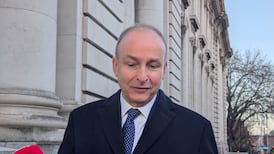Blood-clotting agents which carried the risk of HIV and hepatitis C transmission were used to treat people other than haemophiliacs, it emerged at the Lindsay tribunal yesterday.
Some Factor 9 clotting agent made by the Blood Transfusion Service Board was given to patients - who were not haemophiliacs - undergoing major transplant operations at the Mater Hospital in Dublin.
The product was used on one of the first liver transplant patients in the State, according to Dr Emer Lawlor, deputy medical director of the Irish Blood Transfusion Service (formerly the BTSB). She said the patient did not survive the operation, so whether or not the product was infectious was not an issue.
Cross-examined by counsel for the Irish Haemophilia Society, Mr John Trainor SC, she said 10 vials of an infectious batch of Factor 9 concentrate went to the Mater Hospital between July and October 1985. The batch was one of two which transmitted HIV to seven haemophiliacs.
Mr Trainor questioned Dr Lawlor about the look-back she undertook to see which patients had received vials from these two batches. Dr Lawlor agreed that not all patients who received the product became infected, which was "quite striking".
She added that in one family two men got the same product and only one of them became HIV-positive. The one who got the most Factor 9 did not become HIV-positive. "Some people seem to be resistant," she said.
Counsel suggested it was "a lottery" as to who became infected, and that some vials of the product were more infectious than others.
Dr Lawlor said some vials might have been more infectious but it was more complex than a lottery. "If it hadn't been for their genetic make-up, both of them might have been infected."
The tribunal also heard that 517 vials of non-heat-treated Factor 9 were issued to hospitals between December 1985 and May 1986 and, while over 300 vials were returned by the hospitals, 200 were unaccounted for.
Dr Lawlor said she did not have information on who got the 200 vials. She could not be absolutely sure that everyone who received the product was tested.








